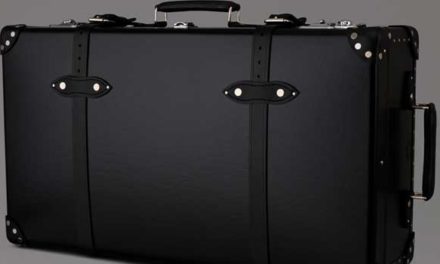We often hear the words waterproof and water-resistant in many of our daily items that don’t do well when wet. We see it as features on our gadgets, bags, and some apparel. But do they mean the same thing or is one better than the other when it comes to protection from water? Today let’s explore the meaning of both and why one is an appropriate term for a certain material than the other. It is important because we are often bombarded by marketing claims that may mislead us if we don’t know it’s the real definition.

What is Waterproof?
When you say that a material is waterproof, it basically means that it is impermeable to water at different degrees. What this means is that waterproof designs or materials can keep its contents dry but not forever. When you talk about gadgets there are certain levels of protection that are commonly indicated on the cover or their product manual. IP means “Ingress Protection” or “International Protection” and this tells you how much resistance or proofing you can get from the material. IP0 means there’s no protection from water and it goes through IP8 which means it can be immersed in water for more than 1 meter in depth. This doesn’t apply to fabrics and apparel.
When it comes to gear or wearable items there is a relatively higher chance that they can easily be stamped as waterproof. But that doesn’t guarantee that it is. It is difficult to tell if your gear is waterproof but there are indications that can help you identify. When choosing a 100% waterproof rain jackets, you should be mindful of the brand and its construction. Reliable brands don’t give out those stamps unless they have tested it in their own facilities. Also, waterproofing boils down to the seams and zippers. Even if it’s made out of plastic if it’s not made well to cover the seams then you’ll still end up getting wet. This also goes with bags and other apparel.
The construction of waterproof apparel is in its material and how it is fused in the seams. Usually, the seams are coated or treated with water-repellant to prevent water from seeping through the gaps. This, however, wears off over time but it is still a reliable method to achieve waterproofing. There is also this method called Sonic Welded Seams. This basically fuses two fabrics using sonic vibrations. It is highly effective and does not make the fabric wear off over time.
What is Water-Resistant?
When a fabric or material is labelled as water-resistant it means that it is able to withstand small amounts of water. This could mean light rain or rain showers, but it cannot hold out when it’s immersed for a long time. Technically, Hydrostatic Head Test or HH places these materials to hold out water pressure of about 1,500 mm or higher. This means that it can resist 1,500 mm of water before permeation.
The fabric’s density is what generally dictates the resistance it has against water. Nylon, polyester, and other materials that can be woven tightly together offer very little holes or gaps for the water to seep through. These fabrics are commonly used in tents, jackets, bags, and other outdoor equipment. They don’t keep you dry forever but to some degree, they offer protection as well as they are lightweight and most are fashionable to wear.

Importance of knowing the difference
It is important to be able to tell the difference so you can decide accordingly. If you’re planning to run in a light drizzle, then you can just wear a lightweight water-resistant jacket. But if you’re planning to go on a long trek, then you’re going to need something more air-tight to keep your things bone-dry. It is also vital that you can tell what types of gear you should use so as you don’t get yourself wet which could cause you to get colds or worse. Price also differs between the two fabrics, because waterproof materials are generally more expensive.
So it’s important that you are able to identify and purchase real waterproof gear or apparel to save yourself from being hoaxed. Although, if you find something that is stamped as waterproof but is a fraction of the price of a legitimate gear, then you should really think twice about its authenticity.
Both waterproof and water-resistant fabrics are treated with DWR to repel water contact. But the latter only applies to light contact while the former can withstand continuous immersion. Water-resistant means it can withstand a light rain shower and they’re usually more affordable and lightweight. A waterproof fabric or gear means that it’s constructed especially well at the seams and zippers and can repel water at higher amounts and for longer periods.















